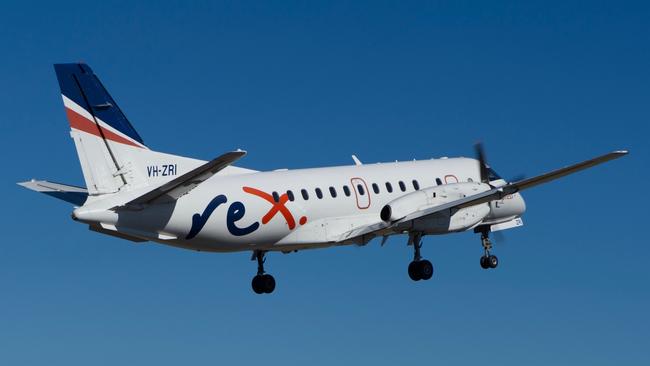Rex reveals Antarctic ambitions as airline struggles to attract pilots to fly regional routes
Rex has put its hand up to be the next aerial operator for the Australian Antarctic Division, even as close to a third of its regional fleet remains parked.

Business
Don't miss out on the headlines from Business. Followed categories will be added to My News.
Rex has put its hand up to be the next aerial operator for the Australian Antarctic Division, even as close to a third of its regional fleet remains parked due to a lack of pilots and engineers.
Seventeen of Rex’s 57 Saab 340s have been in storage for several months, sparking a reduction of regional flights around the network, including to the most remote parts of the country.
Troubles aside, the carrier has submitted a response to the request for information issued by the Australian Antarctic Division as a precursor to Rex’s intention to provide aerial services for the Australian Antarctic Program (AAP).
A partnership between government and research institutions, the AAP undertakes scientific research to help understand the world’s climate and the effects of climate change.
For the first time, the AAD planned to bring together all of its highly specialised aerial needs under one operator’s command, including a passenger jet, four turboprop aircraft able to operate on skis, four helicopters and drones.

Rex’s Antarctic project manager Craig Martin said the “ambitious and challenging program required an operator with deep knowledge of aviation across a whole range of platforms, as well as proven organisational excellence in operating special missions”.
“We believe there is no better Australian candidate than the Rex Group with its expertise in
operating a fleet of 150 aircraft in every State, ranging from Boeing 737s, Embraer
E190 airliners, de Havilland Dash 8 turboprops, over 55 Saab 340 turboprops, one of the
largest fleet of Beechcraft King Air aircraft in Australia, and the recently introduced Pilatus
PC24 jets,” Mr Martin said.
“We also have deep knowledge of special mission work, having carried out tactical flying for
the Department of Defence for 20-years as well as specialised aeromedical services for over
12-years as the selected air ambulance operator for both the State Governments of New South
Wales and Victoria, with another 10-years running on both contracts.”
To help inform Rex’s submission, the company had assembled an Antarctic Advisory Panel comprising experts in the field with practical knowledge of actual aerial operations in the Antarctic.
The panel had guided Rex’s response to the request for information, and would spend the next five-months preparing for the request for tender, expected in November.
Rex recently issued an updated guidance to the ASX informing the market the company expected to make a $35m loss for the year to June 30.
At the airline’s half year results in February, a $16.5m net loss, Rex had been hopeful of making a full year profit.
The likely result was revised last month due to the ongoing pilot and engineer shortage, disrupting regional operations.
Rex also blamed the change in fortunes to a slowdown in business travel due to corporate travel budgets being exhausted by “exponential increases in international fares”.
Its shares were trading at $1.05 on Tuesday afternoon, well down on their pandemic high of $2.07.
More Coverage
Originally published as Rex reveals Antarctic ambitions as airline struggles to attract pilots to fly regional routes





